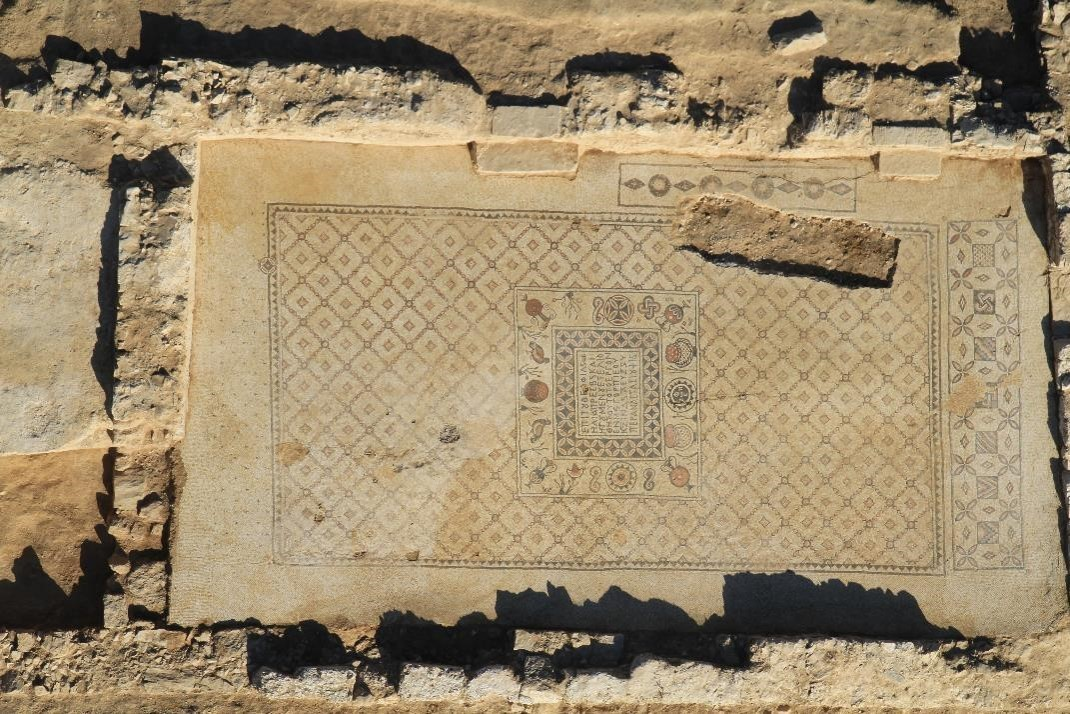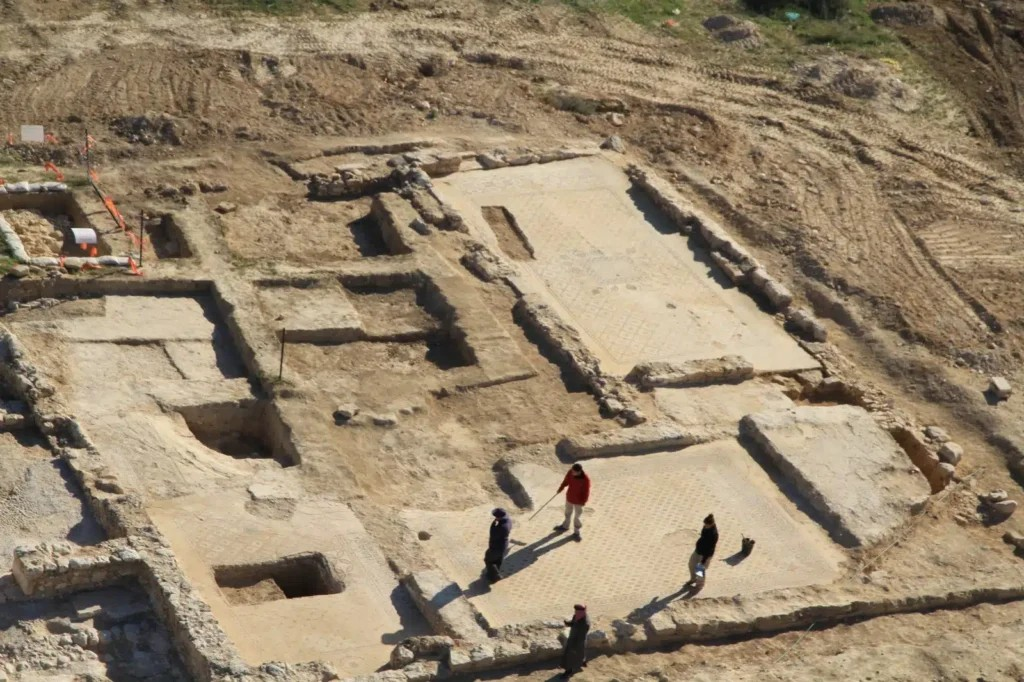Archaeologists have unearthed a remarkably well-preserved 1,500-year-old Byzantine monastery and a stunning mosaic within its chapel, alongside several other significant finds — including a Greek inscription — that offer valuable insight into life in the 6th century.
The discovery, made public in a recent report by the Israel Antiquities Authority, was the result of an excavation in Naḥal Peḥar, near the modern settlement of Giv‘ot Bar, just south of Be’er Sheva.
A Glimpse into Monastic Life in the Desert
Archaeologists have discovered a well-preserved Byzantine monastery in Israel. (Source: Israel Antiquities Authority).
“The monastery is exceptionally well-preserved and offers a rare glimpse into the daily lives of monks in the Negev Desert during the Byzantine period,” explained excavation director Nir-Shimshon Paran. “The site features simple mosaic floors, likely crafted by the monks themselves.”
According to Paran, most of the monastery’s artifacts were uncovered on its floors, suggesting the site was abandoned during the late Byzantine and early Umayyad Caliphate periods — approximately the 6th to 7th centuries CE.
“It’s possible that the monastery was abandoned due to declining regional security during the transition to the early Islamic period,” Paran noted.
The monastic complex includes a chapel, dining room, kitchen, auxiliary wings, and a wine press. The main building’s thick stone walls give it the appearance of a fortified structure, according to the excavation study.
A Greek Inscription and the Chapel Mosaic
A Greek inscription names the monastery and four monks. (Photo: Israel Antiquities Authority).
One of the excavation’s most exciting finds was a unique mosaic discovered in the monastery’s chapel. At its center lies a Maltese cross, and just below it, framed in a decorative border, is a three-line Greek inscription naming the monastery and listing four monks who once lived there.
Adjacent rooms offer further clues into the monks’ way of life. A conical indentation in one mosaic floor may have held a ceramic vessel. Among other items discovered were pottery dating back to 460–475 CE and a cooking pot from the late 5th to 7th centuries.
Two tombs were discovered beneath a stone-clad arch. “A cross was carved at the eastern end of the southern tomb,” said Paran. Additional items — including a collapsed column from the chapel’s façade, a bronze hook, chains, and glass oil lamps — suggest the space was used for liturgical purposes.
Wine Workshop and Inscriptions
The monastery’s kitchen was identified by a 10 cm-thick layer of ash, likely evidence of regular cooking activity. Tables and other remains suggest food preparation, and a sunken storage vessel beneath one table may have served as a traditional oven (ṭabun).
The presence of a winemaking facility is especially noteworthy. In the northeastern section of the auxiliary buildings, archaeologists uncovered a 5.7 × 6.0 m treading floor with a slope leading south. Nearby, a plaster-lined fermentation trench and a possible storage vat were also found.
Two red-brown funerary inscriptions confirm that part of the monastery served as a burial site.
A Rural Byzantine Home
South of the monastery, archaeologists uncovered a rural dwelling dating to the same era. One building featured a rectangular watchtower with a small room, and a coin from the first half of the 6th century CE was found embedded in the floor.
“The monastery and the farmhouse appear to have been occupied during the same period and were likely abandoned together at the end of the Byzantine era,” Paran observed.
The findings have been published in volume 116 of the academic journal ‘Atiqot by the Israel Antiquities Authority.
This extraordinary discovery sheds new light on monastic life in the Negev Desert some 1,400 years ago, offering a valuable glimpse into the everyday experiences of early Byzantine monks.











